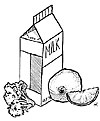


|

|
|
Tuesday, November 10, 2005
|
 The Format rocks Centennial
The Format rocks Centennial
Nearly 2,000 attend on-campus concert
The soft strains of a piano flowed from the Green Room of Centennial Hall last night.
Forty feet away, the bustle of the crowd could be heard as fans of The Format shuffled to their seats.
Two opening bands and 90 minutes later, the crowd of nearly 2,000 erupted with the deafening sound of cheers and whistles as a single light illuminated the drummer for the Phoenix-based pop-punk band.
[Read article]
|
|
|
Neighborly differences discussed
Students and campus-area residents had a chance to discuss the ongoing problem of student-neighborhood relations yesterday at a panel discussion hosted by the Dean of Students Office.
The discussion, titled "Neighbors versus Students: What Would Mr. Rogers Say?" gave people on both sides of the debate a chance to voice concerns and offer solutions to a problem that plagues universities nationwide.
[Read article]
|
|
 Graduates in demand
Graduates in demand
Graduate students provide brainpower for research activities
Graduate students are "key" for enrollment because they provide brainpower for the university and help the UA financially by aiding in research needed to receive grants, officials said.
Changes in enrollment are expected to increase the number of graduate and professional students from 6,850 to 10,000 in the next five years, said Peggy Ota, vice president of Enrollment Management, in an Oct. 26 Arizona Daily Wildcat article.
[Read article]
|
|
 Surveys meant to depict typical UA lifestyles
Surveys meant to depict typical UA lifestyles
Students who view posters modeling the results of the annual UA "Health and Wellness Survey" may question the validity of the statistics, but survey administrators said the student population is accurately represented.
The survey asks questions about student alcohol, drug and tobacco use, sexual habits and physical fitness. The results are printed on posters around campus in residence halls and academic buildings.
[Read article]
|
|
|
New York Times editor to discuss last 10 years
A former UA journalism professor will offer his thoughts on the major events of the last decade from his perspective as an editor at The New York Times.
Ford Burkhart, a staff editor on the foreign desk at the Times, plans to give a speech titled "Bulldogs and Blurbs: A Decade on The New York Times Desks" at noon in the Copper Room in the Student Union Memorial Center.
Burkhart, who retired from the department of journalism in the mid-1990s to take a job at the Times, will offer students a close-up, inside view of one of the most influential newspapers the world, which is part of the New York Times Company, a media conglomerate that owns several newspapers and 35 Web sites.
[Read article]
|
|
|
ASUA calls meeting for elections commissioner
The student government senate voted to hold an emergency meeting to discuss and appoint an elections commissioner to oversee next week's Student Recreation Center referendum.
The Associated Students of the University of Arizona Senate was scheduled to appoint an elections commissioner last night, but tabled the decision because of confusion surrounding the possible resignation of Tyler Carrell, a finance junior and chief of staff for ASUA President Cade Bernsen.
[Read article]
|
|
|
Quick Hits
ADD treatment analyzed today
The SALT Center plans to host a lecture today as part of their 25th anniversary celebration. Dr. Sandy Newmark, coordinator of integrative medicine, will lead the discussion "An Integrative Approach to ADD: Is Medication the Only Answer?"
The free event begins at 6 p.m. at the James E. Rogers College of Law in Room 146.
Campus Town Hall today
A conversation with President Peter Likins and Provost George Davis will be held today to discuss the UA budget and field questions. The lecture starts at noon in Gallagher Theater in the Student Union Memorial Center.
[Read article]
|
|
 Fast Facts
Fast Facts
Things you've always never wanted to know
The nematode Caenorhabditis elegans ages the equivalent of five human years for every day they live, usually dying after 14 days. However, when stressed, the worm goes into a state of suspended animation that can last for two months or more. The human equivalent would be to sleep for about 200 years.
The art of mapmaking is older than the art of writing.
[Read article]
|
|
|
|
